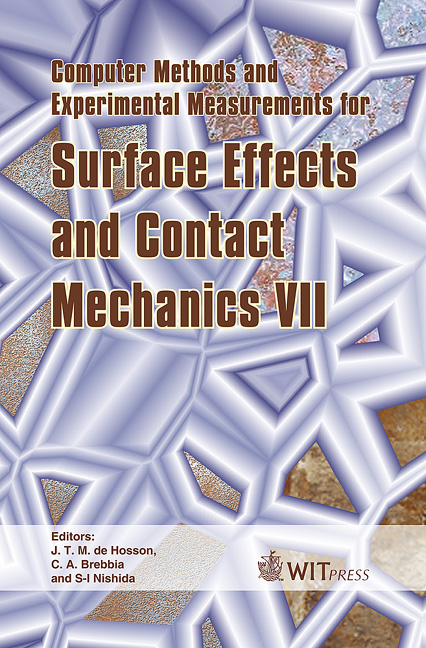Visualisation Of The Real Contact Area At Gasket Surfaces Using Thin PC Films
Price
Free (open access)
Transaction
Volume
49
Pages
10
Published
2005
Size
564 kb
Paper DOI
10.2495/SECM050321
Copyright
WIT Press
Author(s)
I. Nitta & Y. Matsuzaki
Abstract
Leakage rates and real contact areas of the seal surfaces were measured under several closing loads. The static seal consisted of a ring-shaped copper gasket and the two carbon steel flanges, the surfaces of which were finished on a lathe. With increasing closing load, the leakage flow in the radial direction ceased and only that in the circumferential direction remained. To determine the closing load at which radial leakage flow ceases, it is necessary to determine the real contact conditions on the gasket surface. In the present study, the real contact area between the copper gasket and the steel flange was measured using a thin polymer film 1 µm in thickness. The contact pressure over which the radial leakage ceased could be predicted from observations of the thin polymer film. In addition, the cross-section of the channel for leakage flow in the circumferential direction was evaluated from the measured real contact area, and the leakage rates were estimated by assumption of laminar flow. The results agreed well with the measured leakage rates. Keywords: tribology, coupling, flat metallic gasket, leakage, thin polymer film, real contact area, surface roughness, gas leak test. 1 Introduction Solid metal flat ring gaskets are used extensively in industry where, depending on the process medium, temperature, pressure and/or allowable leakage rate, soft materials (or combination gaskets consisting of soft material with metal) cannot be used. It is difficult to estimate leakage rates accurately, as both the flanges and )
Keywords
tribology, coupling, flat metallic gasket, leakage, thin polymer film, real contact area, surface roughness, gas leak test.





